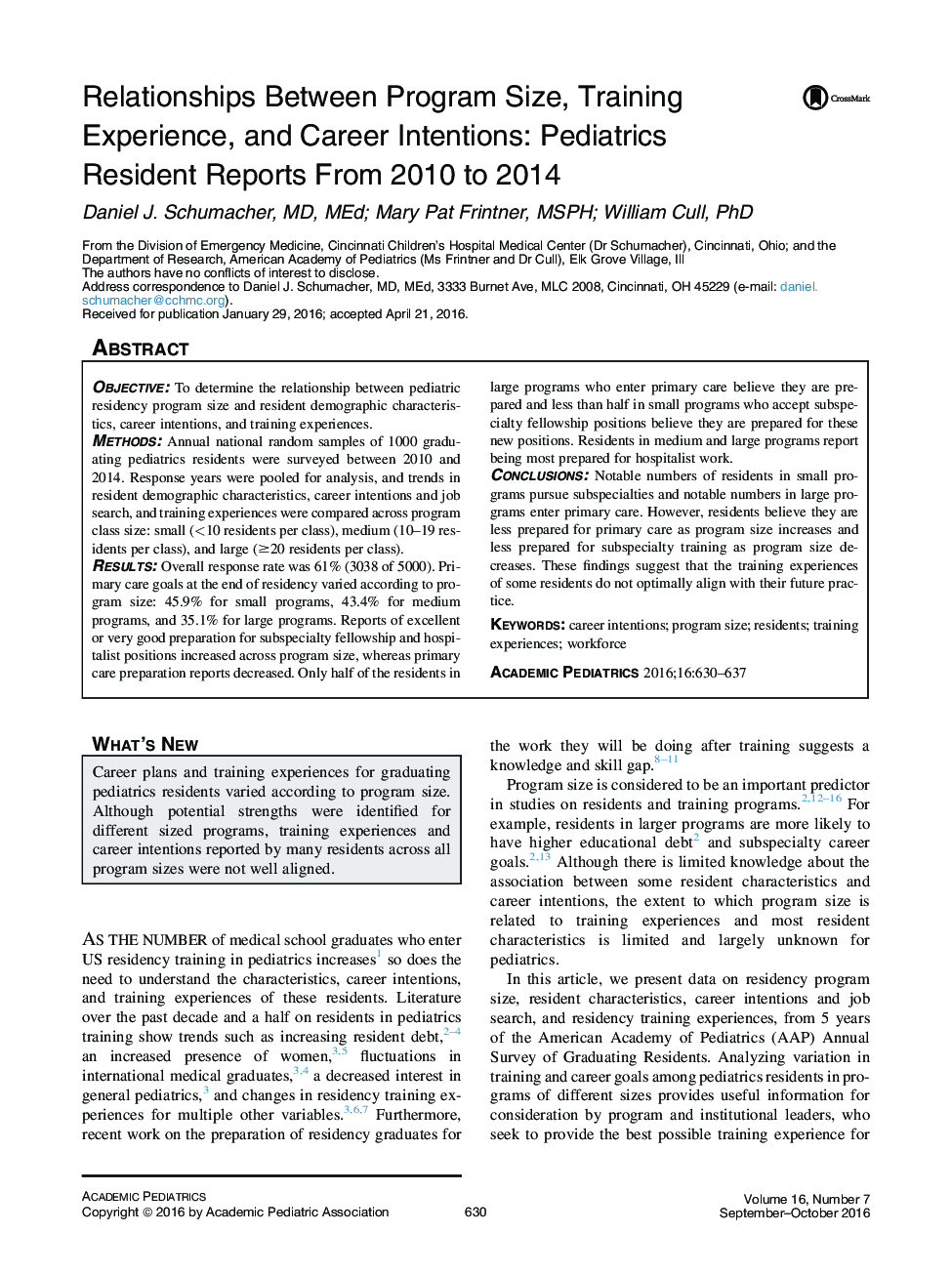| Article ID | Journal | Published Year | Pages | File Type |
|---|---|---|---|---|
| 4138840 | Academic Pediatrics | 2016 | 8 Pages |
ObjectiveTo determine the relationship between pediatric residency program size and resident demographic characteristics, career intentions, and training experiences.MethodsAnnual national random samples of 1000 graduating pediatrics residents were surveyed between 2010 and 2014. Response years were pooled for analysis, and trends in resident demographic characteristics, career intentions and job search, and training experiences were compared across program class size: small (<10 residents per class), medium (10–19 residents per class), and large (≥20 residents per class).ResultsOverall response rate was 61% (3038 of 5000). Primary care goals at the end of residency varied according to program size: 45.9% for small programs, 43.4% for medium programs, and 35.1% for large programs. Reports of excellent or very good preparation for subspecialty fellowship and hospitalist positions increased across program size, whereas primary care preparation reports decreased. Only half of the residents in large programs who enter primary care believe they are prepared and less than half in small programs who accept subspecialty fellowship positions believe they are prepared for these new positions. Residents in medium and large programs report being most prepared for hospitalist work.ConclusionsNotable numbers of residents in small programs pursue subspecialties and notable numbers in large programs enter primary care. However, residents believe they are less prepared for primary care as program size increases and less prepared for subspecialty training as program size decreases. These findings suggest that the training experiences of some residents do not optimally align with their future practice.
